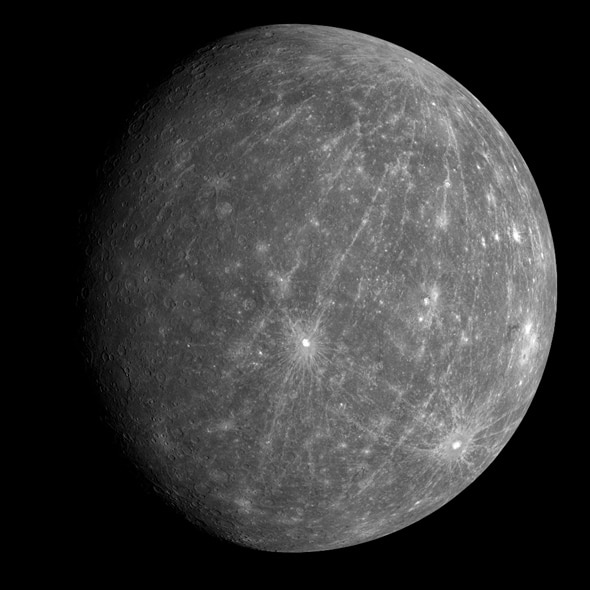Create a free profile to get unlimited access to exclusive videos, sweepstakes, and more!
Farewell, Good MESSENGER

Today, sometime around 19:30 UTC (3:30 p.m. Eastern U.S. time), the MESSENGER spacecraft will slam into the planet Mercury at nearly four kilometers per second.
That will bring to an end an astonishingly successful mission, one that was ridiculously difficult to pull off.
Getting a probe to Mercury is hard. Mercury orbits the Sun far faster than Earth does, but, ironically, dropping the probe straight down from Earth would accelerate it too much to achieve orbit. On its way to the inner solar system, MESSENGER had to pass by Earth once, Venus twice, and Mercury three times to match velocities.
And now, after six and a half years on route, and four years circling the planet (totaling more than 4,000 complete orbits), MESSENGER is out of fuel. The gravity of the Sun distorts its orbit, and over time it would crash one way or the other. Scientists and engineers squeezed every last drop of science they could out of the probe, but the time has come. Today it becomes a part of the planet it studied for so long.
And what a mission it had! The MErcury Surface, Space ENvironment, GEochemistry, and Ranging spacecraft achieved so much in its short time around the rocky world. It made the first global map of Mercury, found ice in the poles, sampled its exosphere, discovered why the planet is so dark (it’s painted black by passing comets), found volcanic deposits, and mapped the minerals on the surface.
You can read more in the Related Posts section below, and see what the principal investigator thought were its 10 greatest highlights. The University of Michigan College of Engineering put up a nice little list of facts about it, too.
NASA released a fitting tribute video to the mission. Watch:
It should be noted that the European Space Agency is preparing its own Mercury mission, due to launch in early 2017. But MESSENGER was special; it was the first Mercury orbiter.
There have been so many nights I’ve gone out after sunset and spotted Mercury in the west, hanging over the horizon in the twilight glow. It’s not always easy to see, and there’s some satisfaction in spotting it before the sky is dark.
Right now, Mercury is climbing in the sky again after sunset, and tonight will be very close to the Pleiades, low to the west. Look for it with binoculars but have a care, it’s low. By the time the sky is dark, it’ll be gone.
But if you do catch Mercury, a faint spark in the gloam, take a moment and tip your hat to MESSENGER, a human sentinel that watched over the tiny, broiling, spectacular, and now less-unknown world.
Related Posts


























